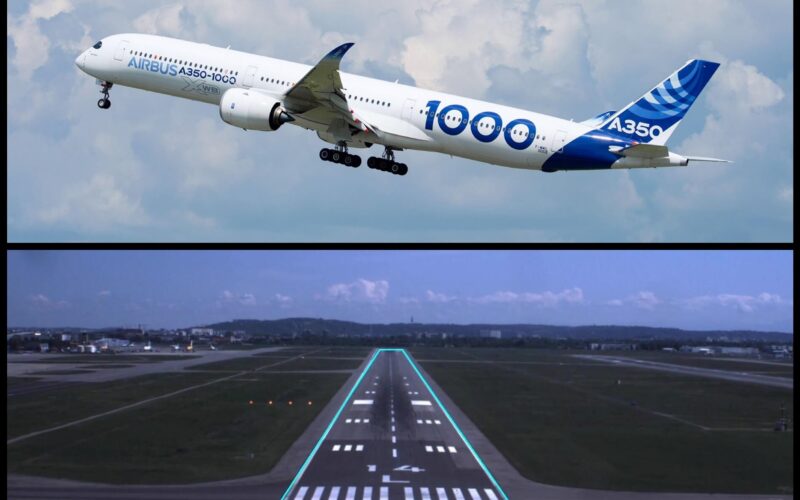Started in 2018, Airbus’ Autonomous Taxi, Take-Off and Landing (ATTOL) project has the ambition to revolutionize autonomous flight. Following a two-year-long flight testing campaign, the European manufacturer announced it successfully reached its goals.
Airbus has achieved autonomous taxiing, take-off and landing of an A350-1000 through fully automatic vision-based flight tests using onboard image recognition technology called Project Wayfinder, developed by Airbus Acubed. The technology was initially designed for Airbus’ electric-powered vertical takeoff and landing (eVTOL) projects.
In total, over 500 test flights were conducted. “Approximately 450 of those flights were dedicated to gathering raw video data, to support and fine-tune algorithms”, says Airbus. Six test flights, each one including five take-offs and landings per run, were used to test autonomous flight capabilities.
The ATTOL project was initiated to explore how autonomous technologies could allow pilots to focus less on aircraft operations and more on strategic decision-making and mission management. One of the non-advertised goals was to see commercial flights operated by only one pilot. “Airbus is opening up possibilities for creating new business models that will transform how aircraft are developed, manufactured, flown, powered and serviced,” the press release reads. Applicable results are expected for 2023.
“This is an exciting milestone for Airbus, the ATTOL team and Project Wayfinder as we build scalable, certifiable autonomy systems to power the next generation of aircraft,” said Arne Stoscheck, Project Executive on machine learning and autonomy at Airbus Acubed.
Airbus engineering and technology teams, Defence and Space, Acubed (Project Wayfinder), Airbus China, and the ONERA collaborated on the project under the leadership of Airbus UpNext.

